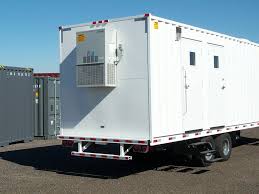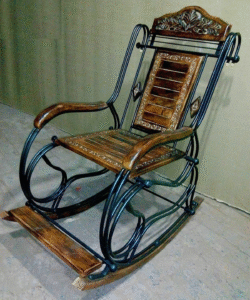Cool, Clean, and Green: The Eco-Friendly Impact of HVAC Insulation
maintaining comfortable indoor environments in residential, commercial, and industrial buildings. One often overlooked but critical component of an efficient HVAC system is insulation, which plays a pivotal role in ensuring energy efficiency, system performance, indoor air quality, and cost savings.
How is the HVAC Insulation Industry Growing in the Coming Years?
The HVAC insulation market size was estimated as 13.49 USD billion in 2023, which is projected to grow to 20.5 USD billion by 2032. The HVAC insulation market CAGR (growth rate) is expected to be around 4.76% during the forecast period (2025-2032).
The HVAC insulation market is transforming due to the increasing variety of needs from both the consumer side and the regulatory side, which translates into a promise for continuous growth and development for HVAC insulation solutions.
The growing emphasis on energy efficiency across various industries plays a pivotal role in driving the HVAC insulation industry. As energy costs continue to rise and environmental awareness increases, businesses and homeowners alike are seeking innovative ways to reduce their energy consumption.
Proper HVAC insulation can significantly enhance the thermal efficiency of buildings, leading to reduced heating and cooling costs. As a result, the demand for effective insulation materials in HVAC systems is on the rise.
Trucks and trailer HVAC systems play a vital role in maintaining temperature-sensitive cargo, driver comfort, and overall efficiency during transport. When these systems are equipped with high-quality insulation, they not only perform better but also support a more sustainable future. By keeping interiors cool, preventing energy loss for a cleaner operation, and reducing fuel consumption and emissions, HVAC insulation helps make freight transport more green. This eco-friendly impact aligns perfectly with the vision of Cool, Clean, and Green logistics—where comfort meets conservation.
What are the key functions of HVAC insulation?
- Energy Efficiency: HVAC systems can account for over 40% of a building’s total energy consumption. Insulation reduces the amount of energy lost during air transport, helping to lower heating and cooling demands. This results in reduced energy consumption and lower utility bills.
- Moisture Control and Condensation Prevention: In cold climates or with chilled water systems, condensation can form on pipes and ducts if they are not properly insulated. This not only leads to water damage and mold growth but can also degrade system performance. Insulation acts as a vapor barrier to prevent this issue.
- Temperature Regulation: Insulated ducts and pipes help maintain the desired air or water temperature as it travels through the HVAC system. This is critical for ensuring occupant comfort and accurate climate control.
- Noise Reduction: HVAC systems can generate significant noise as air moves through ducts or fans operate. Insulation helps dampen sound transmission, creating quieter indoor environments.
- System Longevity: Reduced thermal stress and improved operating efficiency mean that HVAC components experience less wear and tear, extending their lifespan and reducing maintenance costs.
Which Factors Should One Consider When Choosing HVAC Insulation?
Selecting the right type of HVAC insulation involves evaluating several factors:
- Thermal Conductivity: Lower conductivity means better insulation. It determines how well the material resists heat flow.
- Moisture Resistance: In areas prone to humidity, vapor-retardant materials are crucial to prevent condensation.
- Fire Resistance: Some environments require materials that meet fire safety codes and standards.
- Durability: The insulation should withstand mechanical damage, environmental conditions, and system vibrations.
- Cost and Installation Requirements: Budget and ease of application also influence the choice of material.
How HVAC Insulation Works as a Sustainable Solution?
With the growing emphasis on green building and energy efficiency, HVAC insulation is gaining attention as a sustainable solution. High-performance insulation materials reduce greenhouse gas emissions by lowering energy consumption. Additionally, some manufacturers now offer eco-friendly insulation made from recycled or low-VOC materials.
Smart building systems also integrate sensors to monitor HVAC system performance, including insulation effectiveness. Predictive maintenance and energy modeling tools help identify areas where insulation can be improved for maximum efficiency. By minimizing energy waste, reducing greenhouse gas emissions, and supporting long-term system performance, HVAC insulation contributes significantly to greener buildings and a healthier planet.
- Energy Efficiency and Reduced Emissions
At the heart of HVAC insulation’s sustainability lies its ability to reduce energy consumption. HVAC systems are responsible for a significant portion of a building’s energy use—up to 40% in some cases. Without proper insulation, heated or cooled air can be lost as it travels through ductwork or piping, especially when those components run through unconditioned spaces like attics, basements, or crawl spaces.
Insulation acts as a thermal barrier, maintaining the desired temperature of air or fluids as they move through the HVAC system. This means the system does not need to work as hard or run as long to achieve indoor comfort, resulting in less energy usage and lower operational costs. Less energy consumption translates directly into fewer carbon emissions, especially when the energy comes from fossil fuels.
- Moisture Control and System Durability
Sustainable solutions aren’t just about energy savings—they’re also about longevity and durability. HVAC insulation helps protect equipment from condensation and moisture buildup, which can cause corrosion, mold growth, and system inefficiencies. By preventing condensation on cold pipes or ducts, insulation reduces the risk of damage, preserving the integrity of the HVAC system for years to come.
Longer-lasting systems mean fewer replacements, less waste, and reduced demand for raw materials, making insulation a contributor to a building’s overall life cycle sustainability.
- Use of Eco-Friendly Materials
Modern HVAC insulation solutions are increasingly manufactured with sustainability in mind. Many insulation products are now made from recycled materials, such as glass, wool, or plastic, helping to divert waste from landfills. Some materials are also low in volatile organic compounds (VOCs), improving indoor air quality and reducing environmental impact.
Additionally, insulation materials like mineral wool and elastomeric foam are highly durable and can retain their thermal performance over decades, reducing the need for frequent replacements and further lowering their environmental footprint.
- Compliance with Green Building Standards
Proper HVAC insulation supports certifications like LEED (Leadership in Energy and Environmental Design), WELL Building Standard, and BREEAM. These standards promote energy efficiency, reduced emissions, and healthier indoor environments. By contributing to higher building performance, insulation can help developers and property owners meet their sustainability goals and improve property value.
To summarize:
HVAC insulation is a key element in sustainable building design. By reducing energy waste, cutting emissions, protecting system components, and incorporating eco-friendly materials, it supports long-term environmental and economic benefits. With the rising demand for comfortable indoor environments, climate change and energy costs, investing in quality HVAC insulation isn’t just good practice—it’s an essential step toward a more sustainable future.









Post Comment